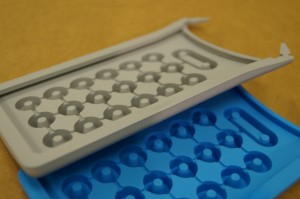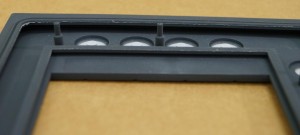Silicone rubber is the ideal option when designing components with irregular shapes, sizes and thicknesses, and offers many advantages over other elastomers. When designing and planning production, the most important factor to consider is mold design and characteristics. There are many options to consider, including location of gate, parting lines and tracks, as well as the metal used to make the mold. All these factors will contribute to the successful production of silicone rubber molding components.

Silicone rubber has a very low viscosity and flows into a hot mold easily, even at low pressures. The gate location is important and is determined by the thickness of the part, as well as the quantity of parts being produced in each cycle. The parting line, where the two halves of the mold meet, and the tracks location and depth are also important to ensure proper fill before the silicone begins to cure. LSR molding shrinks at a predictable rate once cooled and must be taken into account when planning the dimensions of the mold.
The metal used in creating a mold is another option to consider. Steel core molds are the long trusted and durable choice when considering mold materials. Steel molds hold heat very well and are extremely durable, even after repeated heating and cooling cycles, for the life of your product. Aluminum molds are another option; they are lightweight, heat quickly and are less expensive. Silicone rubber takes on the characteristics of the mold’s finish, so texturing a mold can provide a clean matte finish, while polishing a mold can provide a clear unblemished component or insert for molding into another part.









